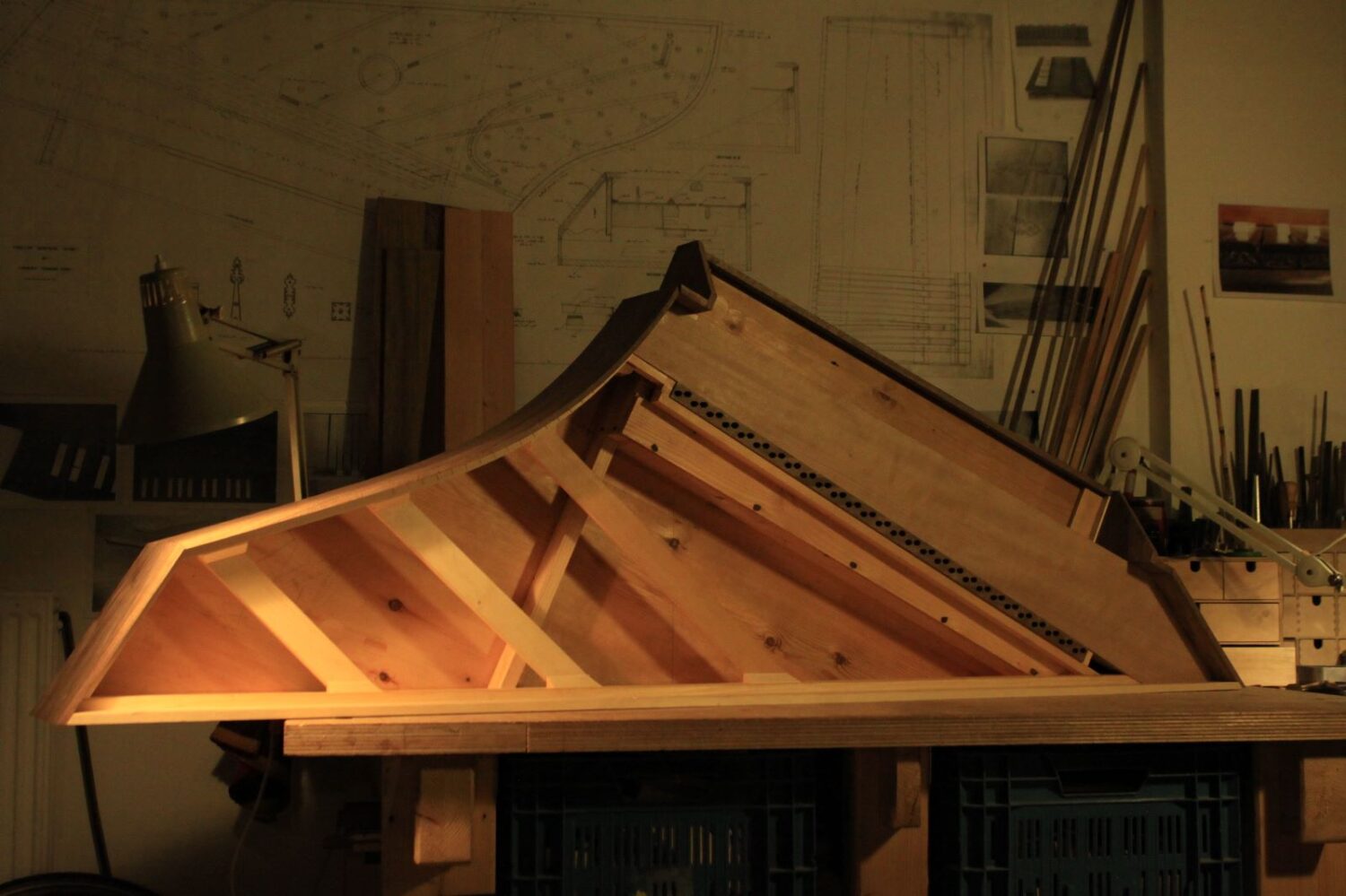Jared Clous, The Transitional Spinet
instrumentenbouw
Francis Ponseele
Darryl Martin
Frank Hollinga
We read the following on April 4, 1668 in the diary of Samuel Pepys, an English bureaucrat of the late seventeenth century:
“(…) took Aldgate Street in my way, and there called upon one Hayward that makes virginalls, and did there like of a little espinette (spinet) and will have him finish it for me, for I had a mind to a small harpsichon, but this takes up less room, and will do my business as to finding out chords, and I am well pleased that I have found it.”
This spinet described by Pepys is one of many English spinets that were possibly made at the time. Due to the Great fire of London in 1666 presumably many English virginals had been lost to the fire. The Charles Hayward of 1689, now in the National Music Museum of Vermillion, South Dakota, is in his rather odd style of instrument building.
Another builder of the time, Stephen Keene, lived down the street of Hayward was also making these instruments in his own but similar style. A fine example is the Stephen Keene of 1685 at the Royal Collage of Music Museum, London, which uses a similar way of building.
We can say that the earliest English bentside spinet makers such as, Hayward, Keene and Player, balanced themselves between the worlds of virginals and this new at that time innovative instrument, the bentside spinet.
Musically, these spinets are very close to their virginal ‘mother’, constructional and soundwise.

